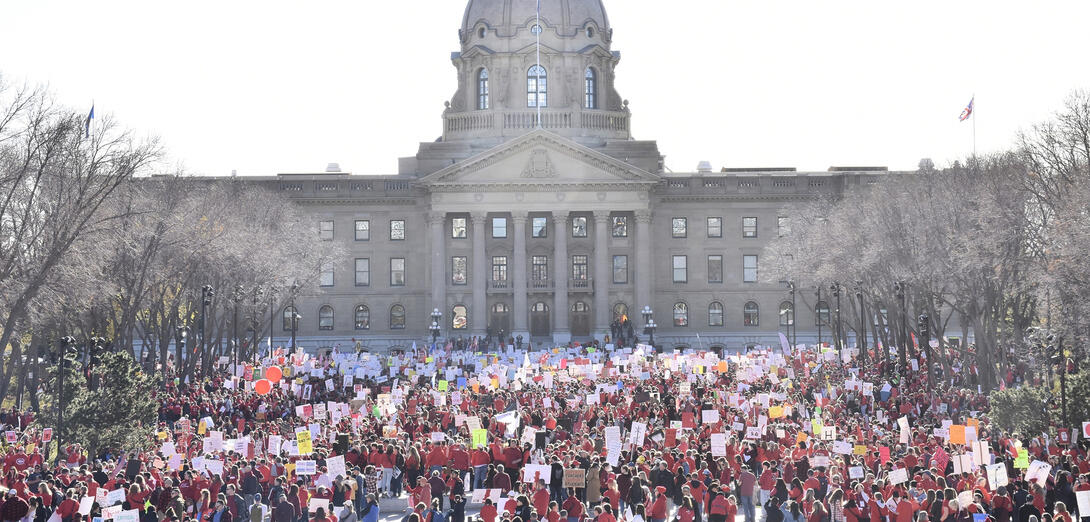After three weeks of strike action, Alberta teachers are still standing together for smaller class sizes, manageable workloads and fair compensation. The Alberta Teachers’ Association (ATA) continues to press for real solutions to the issues that have created this crisis in Alberta’s classrooms, rejecting the government’s “enhanced mediation” proposal—brought forward on October 16—as inadequate and one-sided.
Following the Association’s rejection of the government’s proposal, Premier Danielle Smith said on October 17 that Albertans should “fully expect” legislation forcing teachers back to work during the week of October 27 if the parties fail to reach a deal by the time the legislative session begins.
On October 14, the ATA presented the Teachers’ Employer Bargaining Association (TEBA) with a proposal aimed at reaching a fair agreement that would end the disruption to schools. The proposal reflected the priorities identified by teachers across the province and included a phased-in plan to achieve manageable student–teacher ratios, with language to address growing classroom complexity, as well as a counter to the government’s salary position of three per cent per year.
“Teachers have taken historic and extraordinary action because they know students deserve better,” said ATA president Jason Schilling. “Our proposal provides a balanced path forward, one that addresses the realities teachers face every day in their classrooms and restores stability for students and families.”
TEBA did not provide a counter proposal and instead, on October 16, the Government of Alberta sent a letter to the Association requesting that teachers return to classrooms on October 20 under an “enhanced mediation” process. However, the government stated that student–teacher ratios would not be included in the scope of that process. The ATA’s Provincial Executive Council met in an emergent session to consider the offer and, on October 17, issued a written response rejecting it.
In his letter to government, ATA Executive Secretary Dennis Theobald called the government’s proposal “biased” and said it would “severely restrict the scope of the solutions” that could be considered, particularly around class size and complexity.
“It is engineered to produce a biased and predetermined outcome that entirely favours the government’s objectives,” wrote Theobald. “It is entirely unacceptable to teachers.”
Theobald added that TEBA’s continued unwillingness to meaningfully engage on these core issues left teachers with no choice but to continue strike action.
Schilling said the government’s refusal to discuss student–teacher ratios showed a lack of willingness to confront the real issues in education.
“Teachers are committed to reaching a negotiated settlement that strengthens public education,” he said. “But we cannot accept a process that denies the very issues at the heart of this dispute. Alberta now has the largest class sizes in Canada and the lowest per-student funding. Pre-tending that class size doesn’t matter will not make the crisis disappear.”
Schilling emphasized that the ATA remained fully committed to bargaining, adding that teachers are eager to return to their classrooms but will not accept a deal that fails students and ignores the reality in Alberta’s schools.
“This situation is difficult, and teachers are bearing the financial impact of this decision,” Schilling said. “But we are standing together for the future of public education.”
On October 20, government house leader Joseph Schow said that all means available to the government for getting kids back in the classroom would be explored. At the time of going to press, back-to-work legislation, Bill 2, the Back to School Act, was expected to be tabled on October 27. If legislation is tabled and subsequently passed, the ATA will carefully review the text with the support of its legal counsel. Similar to the government, the ATA will carefully review all its options in response to the legislation.
The latest updates on bargaining and strike action are available on the ATA website.



